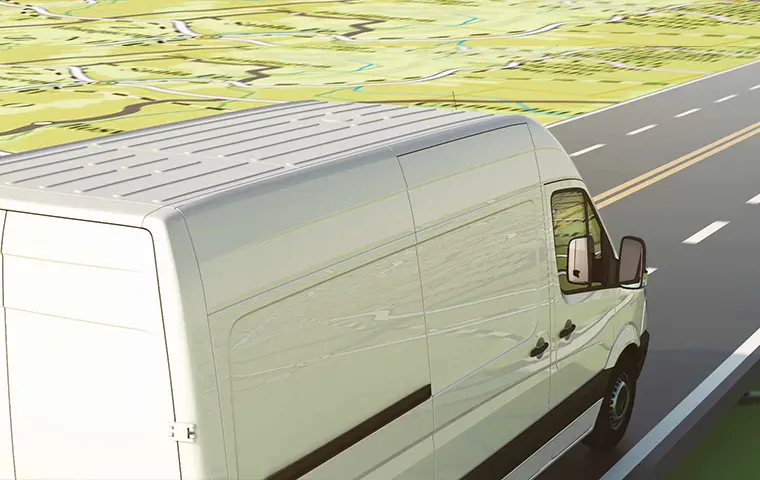It used to be that when you hired new fleet drivers, you’d just have to hand over the keys and hope for the best. Likewise, electronic driver logs were kept in ratty notebooks stuffed into glove boxes and fleet maintenance was often only thought of after problems arose.
With today’s GPS Fleet Tracking Systems, it’s so much easier to manage a fleet of drivers and the equipment they use. But there are so many options on the market. How do you know which is going to be right for your business? There are a number of factors to consider, but our GPS fleet tracking system buying guide can help you make sense of your options.
Features to Look For
There are a great number of vehicle fleet management software options available for your fleet, and each has its own unique set of features. If you’re looking for something very simple that only tells you where your drivers and equipment are at any given time, there are a myriad of options that will do so. Likewise, solutions that offer eLog compliance are easy to come by. But why not get the most out of your investment with advanced features to help your business run more efficiently?
Safety

Did you know that each year your drivers has a one in 15 chance of being involved in a collision? According to Automotive Fleet Magazine, the annual accident rate for commercial fleets is around 20%, with some industries even higher.
One major bonus to your business is a system that helps your drivers become safer on the road known as Azuga FleetMobile, a fleet tracking app. Many trackers will monitor unsafe behaviors such as speeding and hard braking. But reporting this behavior to drivers at the end of their shift or the end of the workweek is considerably less effective than real-time coaching. Look for solutions that offer an in-cab buzzer or personalized video coaching to help curb bad behaviors as they happen.
In addition to correcting bad behavior, rewarding good behavior is a great way to improve driver safety. Options that recognize drivers who maintain good safety ratings can be a wonderful way to incentivize improvement and retain good drivers in the long run. Look specifically for a system that offers you the ability to see who is driving safely and who still needs some help in this area.


Efficiency
Most GPS tracking solutions offer dispatch software to help you move trucks and drivers around. Your fleet solution should offer productivity boosts by helping route your trucks in the most efficient way possible. But there are plenty of other ways to use telematics to improve your fleet’s efficiency.
How many hours do your drivers spend dealing with driving logs? A good tracking solution should improve your operations with e-log support. You’ll want something that meets or exceeds the requirements of the electronic logging device (ELD compliance) mandate. And ideally your solution should be able to alert you when a driver is approaching their hours of service (HOS) limits to help avoid violations.
Every time a truck breaks down, how many hours does your team lose while repairs are made? Where maintenance is concerned, being proactive is a must. Look for a GPS tracking solution that can also help you keep up with vehicle maintenance. A predictive maintenance program will keep your vehicles in the best shape possible so you can keep your drivers on the road instead of waiting for repairs. In fact, 74% of users say Azuga has reduced wear and tear on their vehicles. On average they report a 53% reduction.
Finally, you’ll want a solution that also increases fuel efficiency. Fuel is a huge cost for your fleet, and your GPS telematics solution can help decrease this cost.
Set-Up Costs and Installation
Another big consideration is how difficult or expensive implementation of your GPS solution will be. Some options offer a plug-and-play set up, while others will require advanced installation with a number of sensors to be connected inside your vehicles. This can mean the difference between a quick and easy setup or having your equipment out of service for a few hours each while the trackers are installed.
In addition to the hardware inside your vehicles, you’ll need to evaluate the software you’ll use to run it. Are you looking for something that will only run reports while you’re at the home office? Or do you need to be able to access real-time data via a mobile phone? If you want to be able to do both, be sure to look for a solution that offers app-based data you can access through a phone or tablet.
Ease of Use
The next factor to consider is how difficult the software will be to use. Some companies offer a clear and easy-to-use dashboard where a fleet manager can access all of the fleet telematics data produced with little training. Others may require you to attend offsite training seminars or webinars in order to learn the ins and outs of your new solution.
You should also consider how many others will need to be trained to use the new system. Dispatchers, maintenance crew, drivers, and other members of your team may also need to be given time away from their duties to learn about its features. It’s easy to see how training can add up to be a huge cost if you have to lose out on productivity while your staff is brought up to speed.
Look for an option that is easy and intuitive. Ideally, drivers and other employees should be able to use the program with a minimum of training.

Driver Buy-In
Finally, one of the most important factors that many fleets may overlook is driver buy-in. The last thing you want to do is alienate your drivers by making them feel like you’re installing a big brother type of program.
It’s important to be open and transparent with your fleet drivers about what your fleet solution will and will not track. Reassure them that this is not about managers looking over their shoulders or about distrust. Need some more suggestions on how to introduce this technology to your workforce? Construction Executive Magazine has an excellent guide to walk you through the process.
The best option is to offer drivers the ability to see exactly what is being tracked. An ideal solution will offer a dashboard to drivers as well as management. This allows them to see exactly what is being tracked. And it allows them to learn from their own data on a day-by-day basis.

Choosing a GPS tracking solution for your fleet is a big decision. It’s important to ensure you’ve done your homework and understood exactly what is available and how it will fit into your daily operations. If you follow these guidelines, you’ll be well on the way to an increase in safety, productivity, and efficiency.








